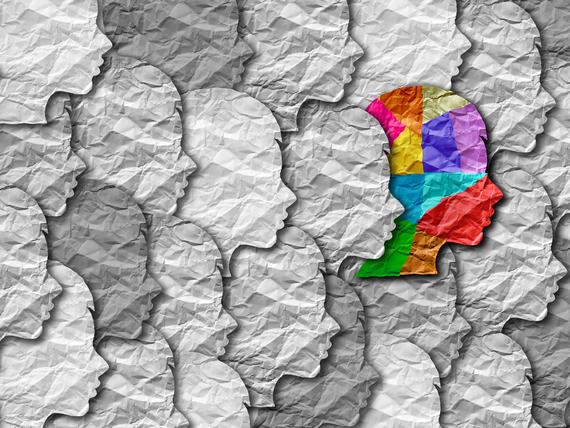Universities worldwide are under pressure to deliver on employability, social mobility and research impact. Yet they often fail to fully support one of their most valuable groups: neurodivergent students. Too frequently, these learners are understood primarily through a deficit lens as individuals who need to be “fixed” or accommodated rather than as people whose potential is being held back by outdated systems.
If we want students to thrive in a complex world, we must shift from an inclusion to an empowerment mindset. This means embedding neurodiversity into teaching, assessment, culture and support in a way that allows students to flourish. The following strategies outline how universities can make this shift in practice.
Foster a neuroaffirmative culture
The starting point is cultural change. Universities need to move away from compliance-based approaches and instead embrace neurodiversity as a valuable dimension of human variation. Positioning neurodivergence as part of equity, diversity and inclusion strategies is vital. This means rejecting deficit-based narratives and adopting language that affirms positive identity.
One practical step is the creation of disability cultural centres. Unlike traditional offices that focus on reasonable adjustments, these centres provide a sense of community and belonging. They can host neurodivergent-led clubs, peer networks and events that build positive identity, rather than focusing solely on legal compliance.
Equally important is the principle of co-creation. Too often, neurodivergent students are consulted late in the policy development process, if at all. Instead, institutions should commit to a “nothing about us without us” approach. Neurodivergent students and staff should be embedded into steering groups, curriculum design committees and working groups on teaching and learning. Their lived experience provides insights that no training course alone can replicate.
Design flexible and inclusive learning
Teaching and assessment practices are often the most significant barriers to success for neurodivergent students. A rigid reliance on lectures, essays and exams assumes a narrow set of abilities. Instead, universities should commit to universal design for learning (UDL), which provides multiple routes to engagement, expression and representation.
This approach can be implemented in very practical ways. For example, you could offer learning materials in different formats, with captions, transcripts and accessible slides as standard. You could also diversify classroom interaction through digital polling tools, interactive workbooks and anonymous Q&A forums that allow students who process information differently to contribute on equal terms.
We must also reimagine assessment. Timed, high-pressure exams and long essays can disadvantage many neurodivergent learners. Alternatives such as oral presentations, project portfolios, reflective blogs or creative outputs give students varied ways to demonstrate their knowledge. Involving students in shaping assessment design can be particularly powerful. Allowing them to co-create exam questions or select from a range of assessment formats gives ownership and aligns assessment with students’ strengths.
The physical and sensory environment of learning spaces also matters. Simple changes, such as providing quiet study zones, ensuring adjustable lighting and allowing for movement or fidgeting in classrooms, can significantly enhance students’ ability to participate and concentrate. These adjustments require little cost but make a profound difference to everyday learning.
Build integrated and person-centred support
Support for neurodivergent students in higher education is often fragmented, requiring them to navigate multiple offices for academic adjustments, housing needs or well-being support. This creates additional stress and leads to students falling through the cracks. A more effective approach is to have a single point of contact who can coordinate across different services and act as a trusted advocate for neurodivergent students.
Staff training is also crucial. Academics, administrators and senior leaders alike need ongoing professional development to understand neurodiversity and intersectionality. Without this, students are affected by bias. Training should go beyond basic awareness, equipping staff with practical strategies to support diverse learners in their teaching, supervision and administration.
The transition into higher education is another area where support is critical. The move into university is often overwhelming, particularly for students who struggle with change. Tailored induction programmes, peer mentoring and clear guidance on navigating university systems can ease this adjustment.
Similarly, the transition out of higher education into employment presents further challenges. Neurodivergent graduates may find interviews, workplace social norms or disclosure decisions especially difficult. Career services should therefore offer targeted coaching, employer workshops and mentorship programmes that prepare students for the workplace.
We must also bolster mental health support. Neurodivergent students experience higher rates of anxiety, depression and burnout. Universities should ensure counselling services are well funded and staffed by professionals with expertise in neurodiversity, rather than generalists unfamiliar with these issues.
- Spotlight guide: Make good mental health a university priority
- How can we support Black neurodivergent students?
- How to create an inclusive campus for neurodivergent students
Apply an intersectional lens
The experiences of neurodivergent students cannot be understood in isolation from other aspects of identity, such as race, gender, class or sexuality. For example, Black neurodivergent students’ behaviours are sometimes misread through racial stereotypes rather than understood as manifestations of neurodivergence, leading to disciplinary consequences instead of support.
To address this, universities must embed intersectionality into all neurodiversity strategies. Policies, training and support systems need to be culturally sensitive, recognising that barriers multiply when identities intersect. This means actively seeking input from students with marginalised identities and designing interventions that address their specific needs.
Putting it into practice
Progress in this area does not require sweeping reform overnight. Below are actions that demonstrate commitment.
- Conduct a policy audit through a neurodivergent lens to reveal where barriers persist
- Pilot flexible assessment methods in one programme to reveal evidence of impact before scaling
- Establish a peer mentoring scheme
- Review recruitment practices for student ambassador roles.
Momentum matters: each step signals to students that their strengths are recognised and their success matters. Over time, these practical strategies accumulate, shifting institutions from neurodiverse-friendly to neurodiverse-empowered.
Empowerment as the goal
The true test of a university’s commitment to diversity is not whether neurodivergent students are present, but whether their potential is unlocked. Empowerment requires systemic change across culture, pedagogy and support. It involves embedding neurodivergent voices into decision-making, designing flexible and inclusive teaching approaches, coordinating person-centred support, and applying an intersectional lens.
By focusing on these strategies, universities can ensure that neurodivergent students not only survive but also thrive in higher education. The reward will be graduates who are not only skilled and resilient but who also enrich the wider world with their perspectives. In an era of global challenges, higher education cannot afford to overlook this potential.
Patrice Seuwou is an associate professor of learning and teaching and the director of the Centre for the Advancement of Racial Equality at the University of Northampton.
If you would like advice and insight from academics and university staff delivered direct to your inbox each week, sign up for the Campus newsletter.




comment